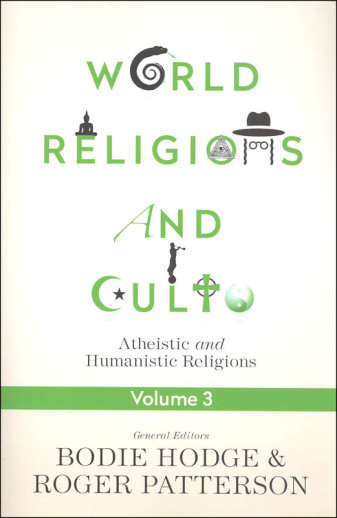We use cookies to make your experience better. To comply with the new e-Privacy directive, we need to ask for your consent to set the cookies. Learn more.
World Religions and Cults Volume 3
Volume 3 includes an overview of secular and atheistic religions, Atheism, Agnosticism, Secular Humanism, Nazism, Scientology, Communism, Postmodernism, Epicureanism and Evolutionary Religions, Dualism and the Types of Religions, Christian Syncretism with Evolution and Other Belief Systems (Compromise), Religion of Naturalism, Materialism, Empiricism, and Afterlife (What must I do to be saved?).
This final book in the series focuses on the atheistic or humanistic type of religions. It would be one of the most valuable for the church in the Western World where anti-god and pro-evolution religions are beginning to explode, for it was written to refute those religions and show how they fail. Unlike most books on world religions, this title dives into the secular humanistic religions. The book starts with God's Word as the absolute authority. In doing so, God becomes our guide to refute false religions.
- Humanistic religions are all around us and we need to be able to spot their tenets and oppose them instead of allowing them to subtly infiltrate our Christianity and undermine us from within
- We need to know how to refute these humanistic religions
- We need to know how to effectively present the gospel to people who have been deceived by humanistic religions
There are so many religions and cults in the world. How do you know where to begin trying to understand them? An introduction written by Bodie Hodge and Ken Ham in Volume 1, explains the criteria used to determine whether a belief system is false - there are only two categories, God's and Not God's. Those that are not of God, are of man. The first three chapters of Volume 1 are about defending the Christian faith and an explanation of Biblical Christianity.
Each volume of this series is divided into chapters written by a broad range and variety of authors. Each chapter strives to give a brief history of that religion/cult and their basic beliefs. At the end of each chapter, a chart lists a summary of what is believed about God, Authority/Revelation, Man, Sin, Salvation, and Creation by that particular group. Belief systems are divided into categories, then placed in the appropriate book. The authors acknowledge that some of these could be in several categories, but they went with their best judgement. Volume 1 is Counterfeits of Christianity, Volume 2 is Moralistic, Mythical, and Mysticism Religions, and Volume 3 is Atheistic and Humanistic Religions.
As a general overview of belief systems, these could be used as a reference for comparative religion - a reference for your home library. Written from conservative protestant perspectives, you may not agree with all the comments found in this series, and may be offended by some of the authors' views.
| Product Format: | Paperback |
|---|---|
| Brand: | Master Book Publishers |
| Author: | Bodie Hodge & Roger Patterson |
| Grades: | 7-AD |
| ISBN: | 9780890519707 |
| Length in Inches: | 9 |
| Width in Inches: | 6 |
| Height in Inches: | 0.875 |
| Weight in Pounds: | 0.9 |

